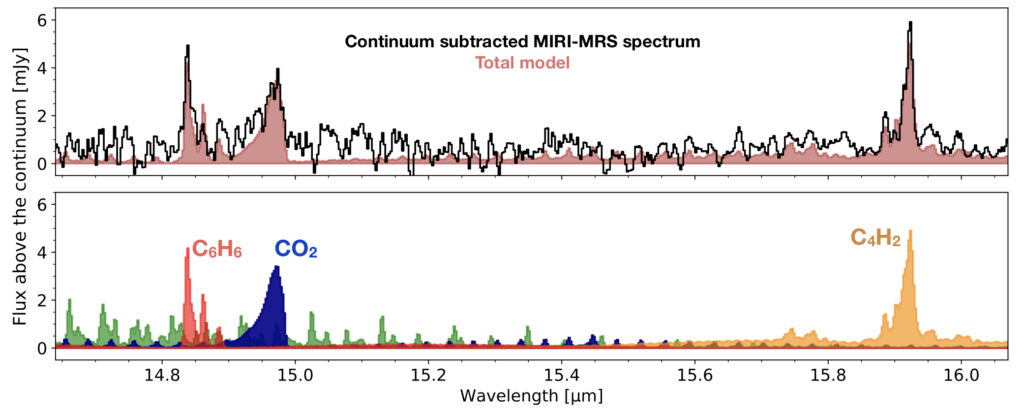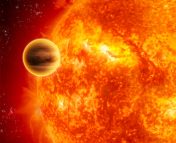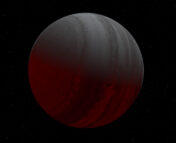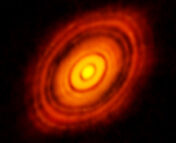Paper Title: A rich hydrocarbon chemistry and high C to O ratio in the inner disk around a very low-mass star
Authors: B. Tabone, G. Bettoni, E. F. van Dishoeck, A. M. Arabhavi, S. L. Grant, D. Gasman, T. Henning, I. Kamp, M. Güdel, P. -O. Lagage, T. P. Ray, B. Vandenbussche, A. Abergel, O. Absil, I. Argyriou, D. Barrado, A. Boccaletti, J. Bouwman, A. Caratti o Garatti, V. Geers, A. M. Glauser, K. Justannont, F. Lahuis, M. Mueller, C. Nehmé, G. Olofsson, E. Pantin, S. Scheithauer, C. Waelkens, L. B. F. M. Waters, J. H. Black, V. Christiaens, R. Guadarrama, M. Morales-Calderón, H. Jang, J. Kanwar, N. Pawellek, G. Perotti, A. Perrin, D. Rodgers-Lee, M. Samland, J. Schreiber, K. R. Schwarz, L. Colina, G. Östlin, G. Wright
First-author institution: Université Paris-Saclay, CNRS, Institut d’Astrophysique Spatiale, Orsay, France and Leiden Observatory, Leiden University, Leiden, the Netherlands
Status: Nature Astronomy, Volume 7, p. 805-814 (Closed Access)
According to our current understanding of stellar system evolution, planets are created from large circumstellar disks of gas and dust. While the specific mechanisms by which planets arise out of these disks is a current field of research, there is a lot to be learned about fledgling planets by studying their disks alone. The chemical makeup of these disks is particularly useful, as we are especially interested in systems which could create Earth-like planets. In this week’s paper, the authors analyze recent JWST spectral observations of a circumstellar disk around a nearby M-dwarf star, 2MASS-J16053215-1933159 (often shortened to J16053215, for convenience). These M dwarfs, sometimes called “Red Dwarf” stars, are the most common type of star in the Galaxy. It is therefore beneficial to better understand the chemical evolution of their disks. In the context of the search for extrasolar life, we hope to find planet-forming systems which contain a high abundance of hydrocarbons (molecules made of only hydrogen and carbon) and water. Such molecules are necessary for planet habitability. Using our understanding of atomic and molecular physics, the authors of this week’s paper are able to obtain the disk chemistry from the spectrum of J16053215, and model the expected disk structure.
Determining the chemistry of a material that we cannot directly interact with is no small task, but one that astronomers have developed clever ways to tackle. At the center of all these methods is spectroscopy, where the light emitted by (or traveled through) a distant material is split into its constituent wavelengths, analogous to shining light through a prism to create a rainbow. The various atoms and molecules in the material can emit or absorb particular wavelengths of light, creating sharp “bumps” in the spectrum (called “lines”) at very specific locations. This emission or absorption ultimately originates from changes in the energy of the electrons in the atoms and molecules. The final overall shape of the spectrum is then primarily dependent on the temperature of the disk (which corresponds to the kinetic energy of the molecules in the disk), the light being emitted by the central star, and the relative abundance of the various molecules making up the disk.

In order to isolate the disk transition lines associated with its chemical makeup from the J16053215 spectrum, today’s authors begin by subtracting the light from the central star. We know what this should look like based on the star’s spectral classification. They also subtract the thermal dust emission from the disk, which does not yield any relevant insight into its chemistry. They are left with the relatively simple spectrum seen in the top panel of Figure 1. They then use the known spectral contributions of a number of expected molecules and “slab” models to create a synthetic spectrum for each molecule (bottom panel, Figure 1). The final model fit is created by adding these synthetic spectra together. They use a χ-squared method of fitting these synthetic spectra to the real data. This is done by creating a large number of different models with slightly varying input parameters (molecule densities, dust temperature, etc.), and statistically analyzing the parameters that yield a model with the best fit.
From here, the final expected chemistry can be used as an input to a thermochemical disk model, which uses the chemistry, stellar radiation input, and a general understanding of dynamics to ascertain models for the expected structure of the disk, given the observed data. One possible structure is illustrated in Figure 2. The example model is that of a two-part disk, possibly containing a gap separating the inner and outer structures. The inner and outer disk are characterized by their relative carbon-to-oxygen (C/O) ratios. The gas of the modeled inner disk boasts a significantly greater C/O ratio than that of the modeled outer disk. The structure of the inner disk can be broken down further. The sublimation radius is around 0.01 AU. Inside this radius, the heat from the star causes the dust to sublimate into gas, and be swept away by stellar feedback. The limit at which a significant number of carbon-rich dust grains exist is about 0.033 AU. The water snow-line, beyond which water is able to remain in the dust grains, sits at around 1 AU.

Ultimately, today’s authors find that the J16053215 disk is rich in hydrocarbon molecules. When compared to the existing literature, these results indicate that such molecules are more common in disks around low-mass dwarf stars than higher mass stars. This is significant for our understanding of planetary formation, as these sorts of carbon-rich molecules may impact evolution mechanisms in planet-forming disks. It is uncertain at this point if hydrocarbon molecules form more efficiently in dwarf star disks, or if they are just better able to remain in such locations after they are formed. These results are consistent with recent JWST observations, which show that planet-forming regions around dwarf stars have an especially high ratio of carbon to oxygen.
Astrobite edited by: Brandon Pries, Keighley Rockliffe
Featured image credit: NASA/JPL-Caltech





When subtracting the star spectrum, do you take the red shifted wavelengths into account?
Hi Nick! Thanks for the question. As a generality, standard operating procedure for spectral data is to appropriately account for the red shift (or, in some cases, blue shift) of the spectrum before any further analysis is done. In fact, doing so is necessary in order for the line emission models to be fit correctly!